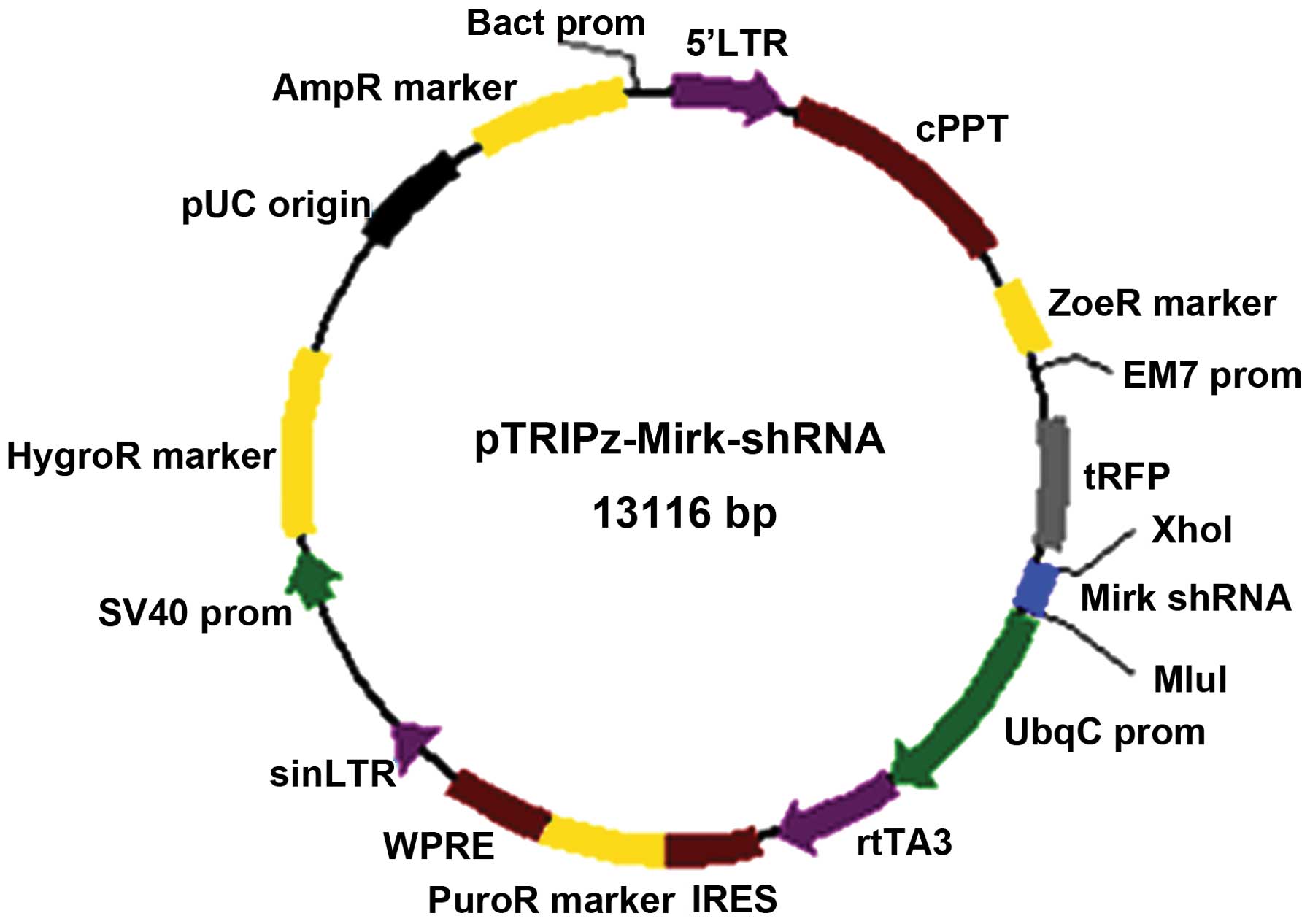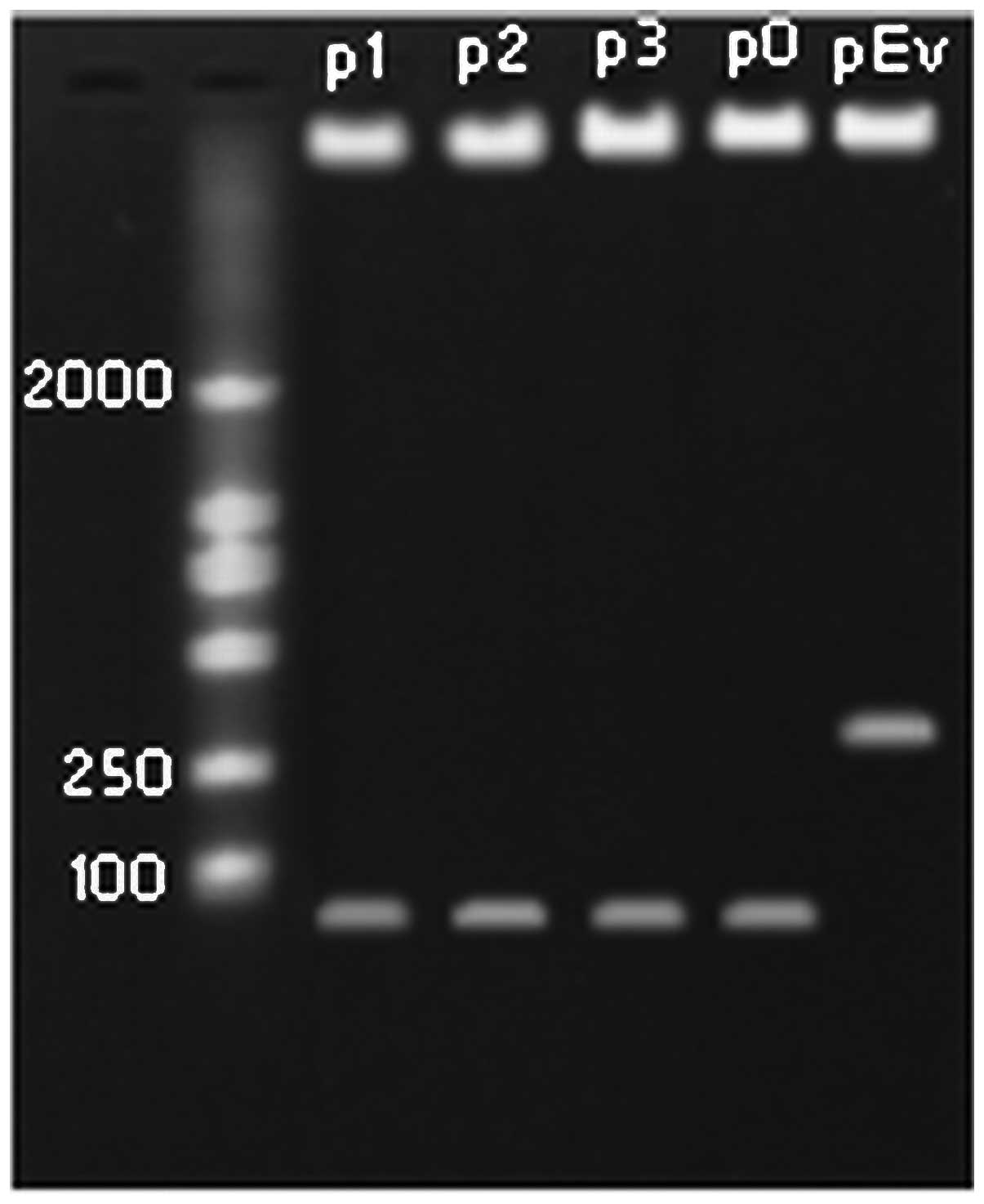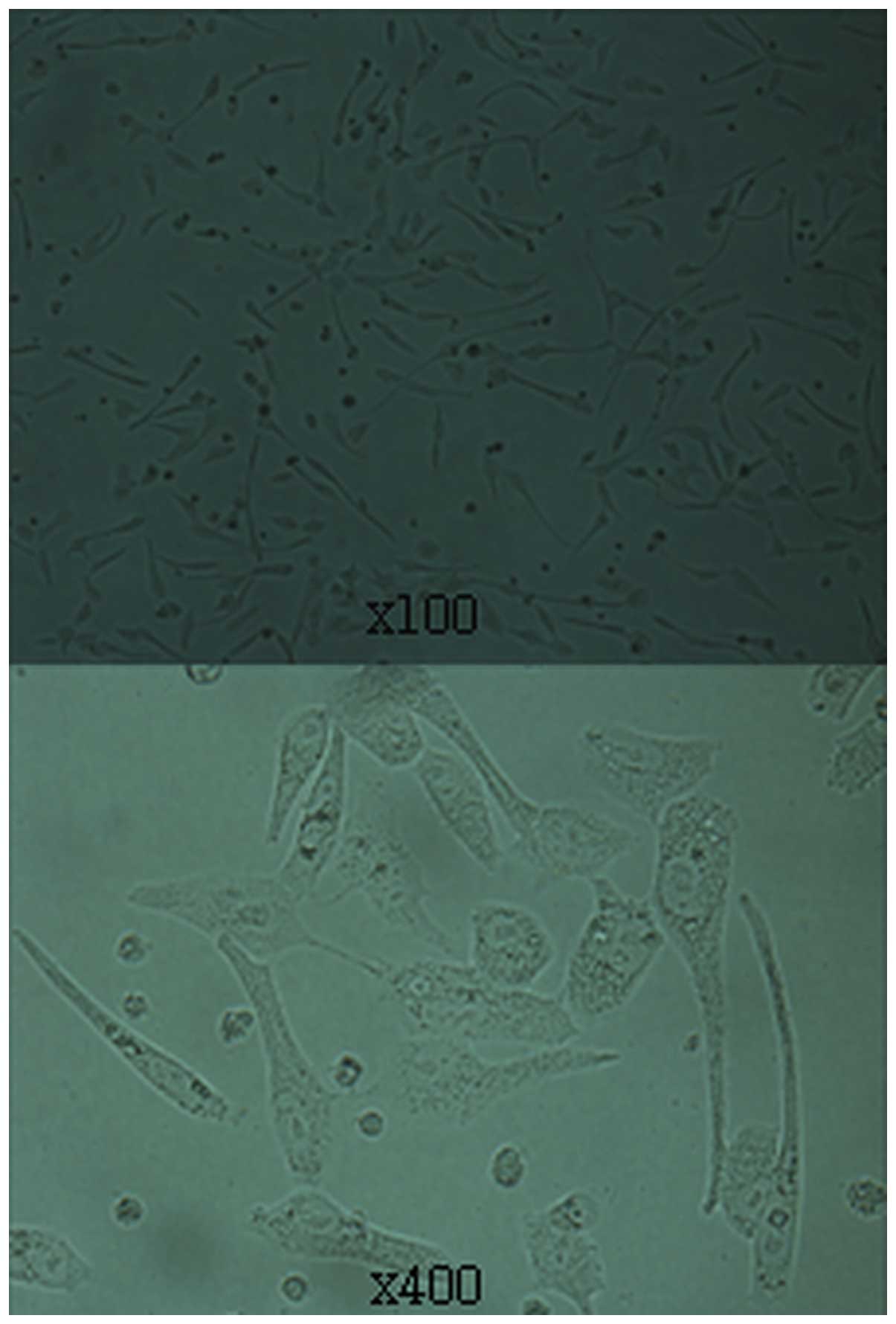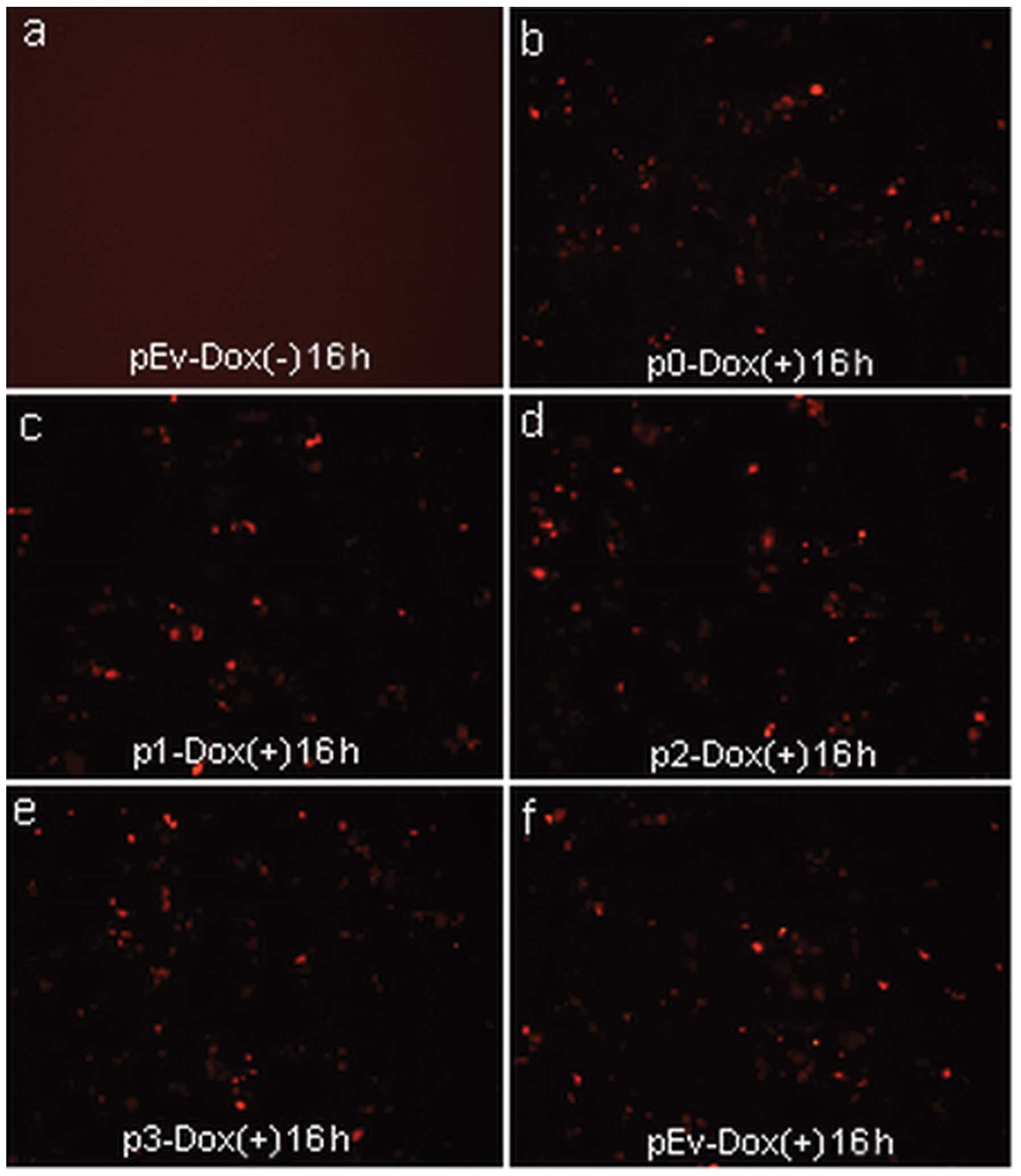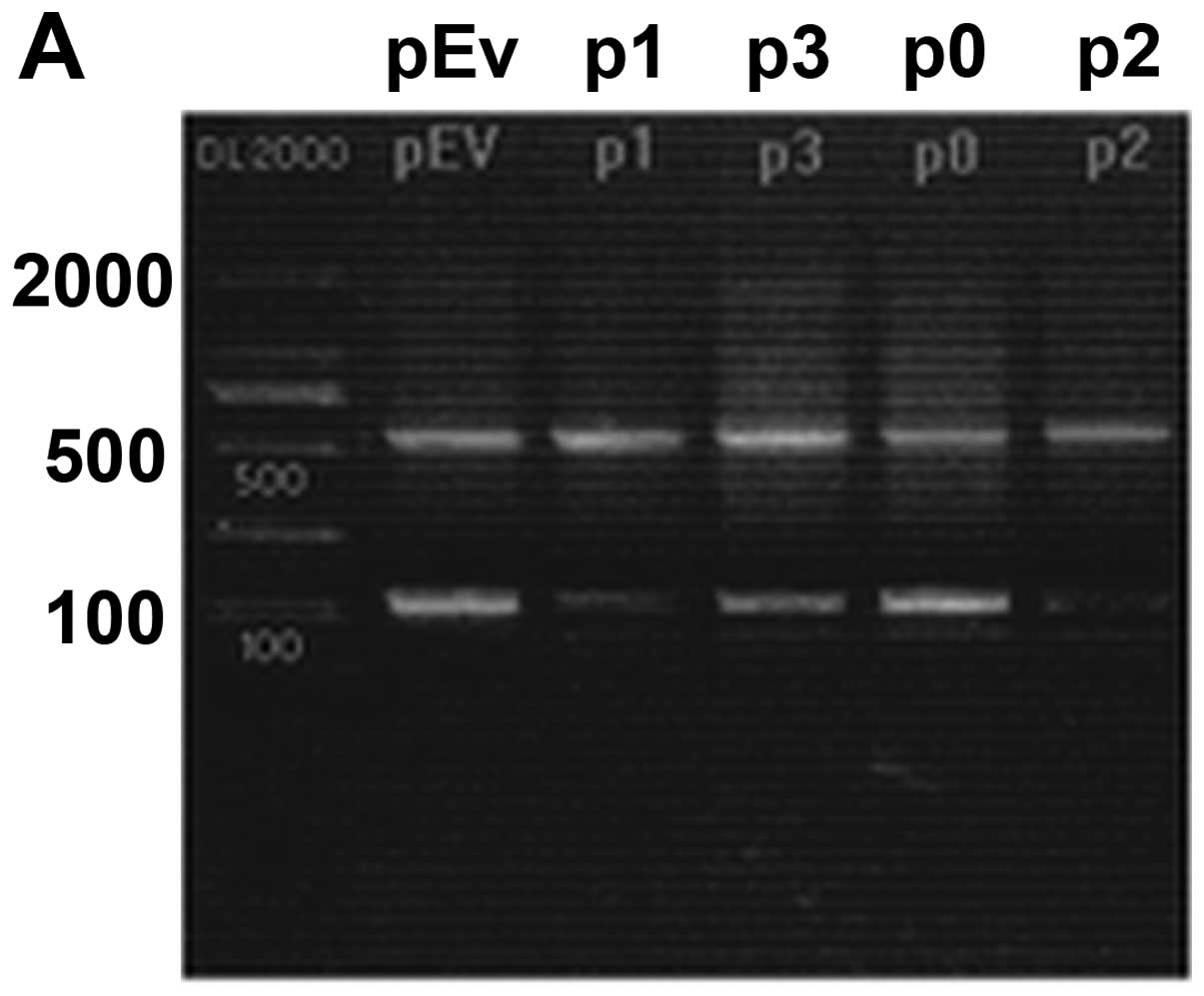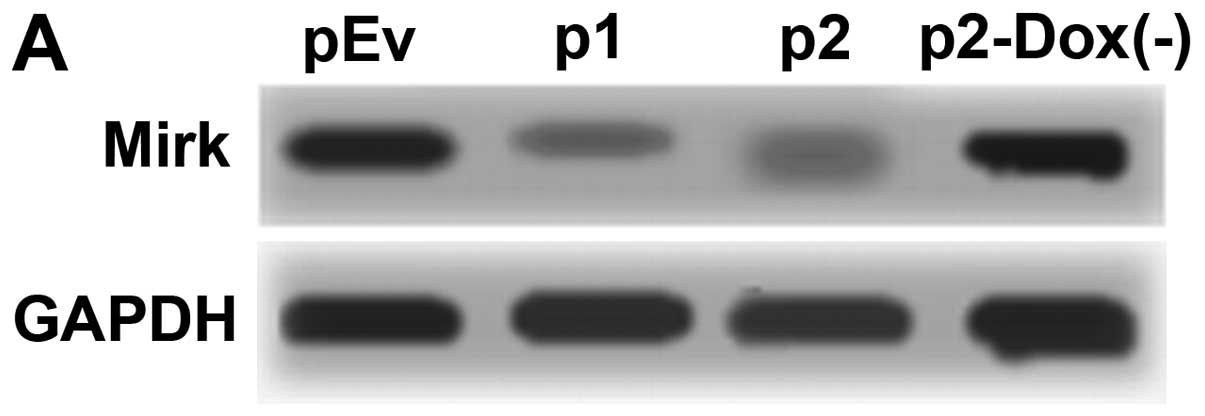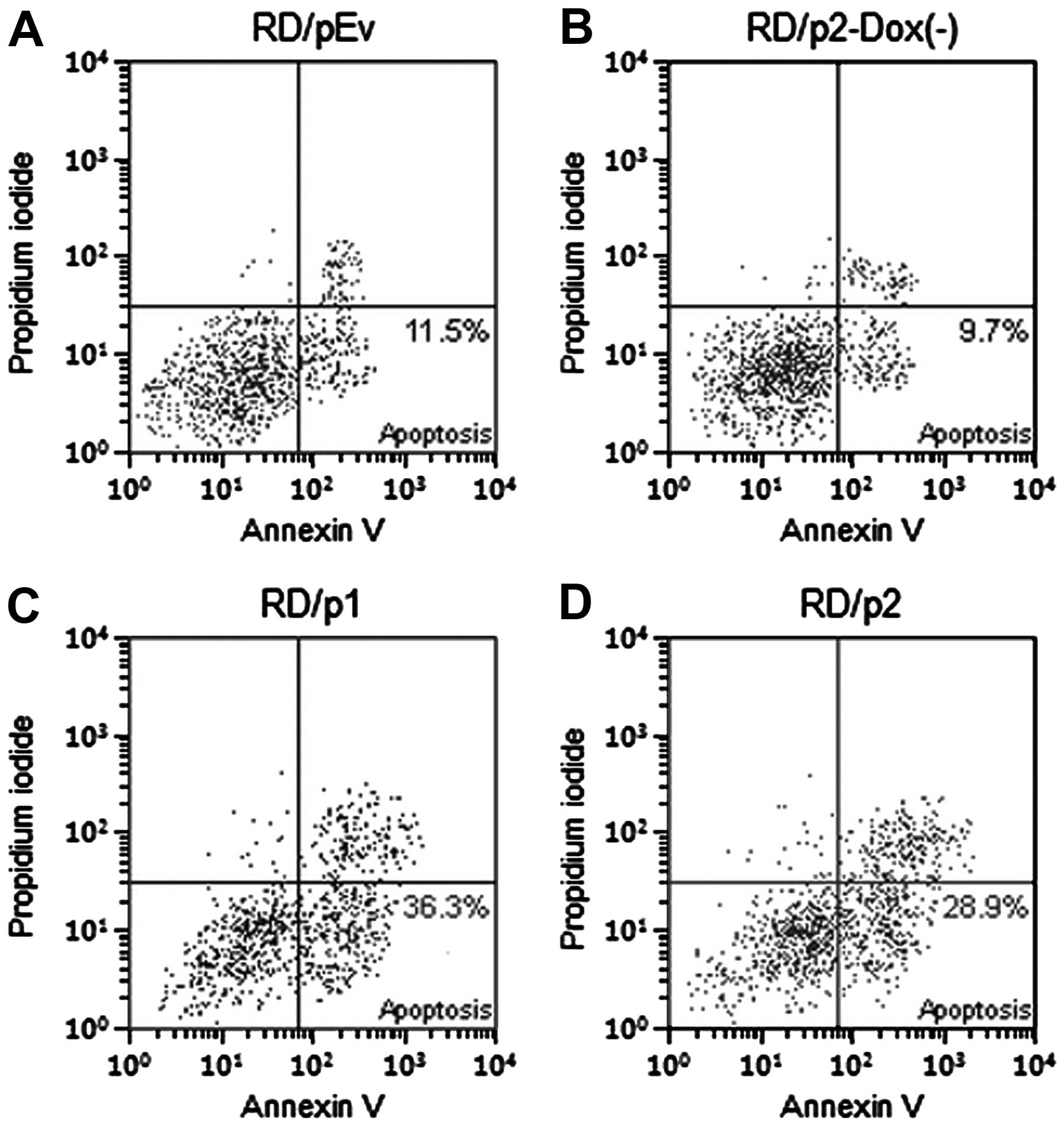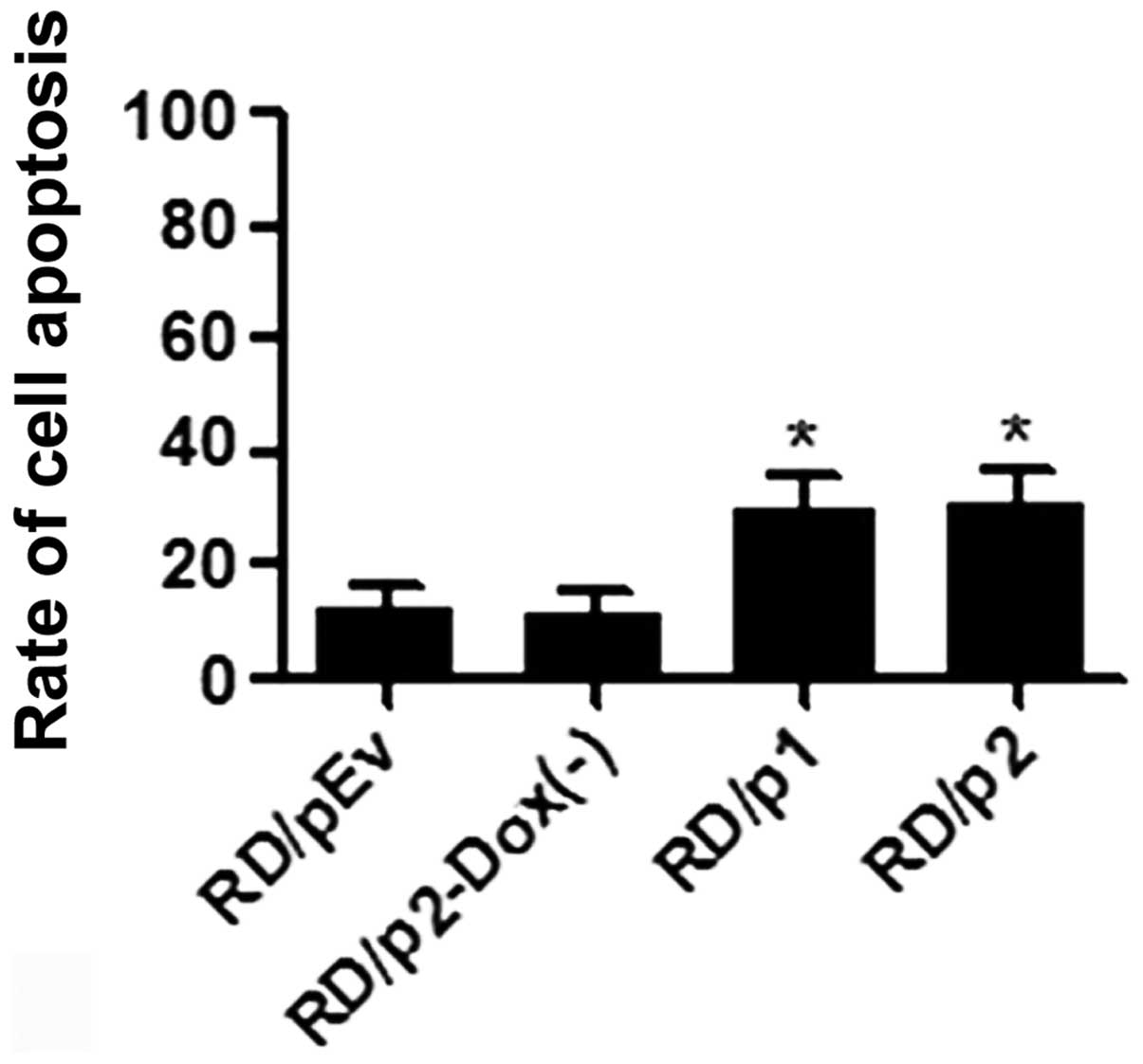Construction of conditional lentivirus-mediated shRNA vector targeting the human Mirk gene and identification of RNAi efficiency in rhabdomyosarcoma RD cells
- Authors:
- Published online on: August 2, 2013 https://doi.org/10.3892/ijo.2013.2048
- Pages: 1253-1259
Metrics: Total
Views: 0 (Spandidos Publications: | PMC Statistics: )
Total PDF Downloads: 0 (Spandidos Publications: | PMC Statistics: )
Abstract
Rhabdomyosarcoma is the most common malignant soft tissue tumor in children. It has been demonstrated that Mirk as an activated protein kinase is overexpressed in rhabdomyosarcoma cells, which may be correlated with tumorigenesis. The aim of the present study was to explore the possibility of Mirk gene as a therapeutic target for the treatment of rhabdomyosarcoma, and the use of RNA interference in a temporally and spatially restricted manner to study the function of the target gene would be highly beneficial. To address this problem, a conditional lentivirus-mediated short hairpin RNA targeting human Mirk gene was constructed and employed to reduce endogenous Mirk expression in the rhabdomyosarcoma RD cell line in vitro. The expression of Mirk shRNA in RD cells transduced with this recombinant vector could be tracked with the expression of red fluorescent protein by the administration of doxycycline. A stable transgenic RD line was generated by transducing RD lines with the packaging viral particles. Quantitative PCR and western blot analysis indicated that the mRNA and protein levels of Mirk in the transgenic RD cells were significantly lower compared to those in the controls. In addition, the increasing apoptosis of RD cells induced by silencing of the Mirk gene was also observed. Overall, the results demonstrated that this recombinant vector-based RNAi expression system is an efficient approach to knockdown Mirk gene expression in the rhabdomyosarcoma RD cell line, which could, thereby, provide both a protocol to study the role of Mirk gene in tumor cells and a safer gene therapy in the clinic.



